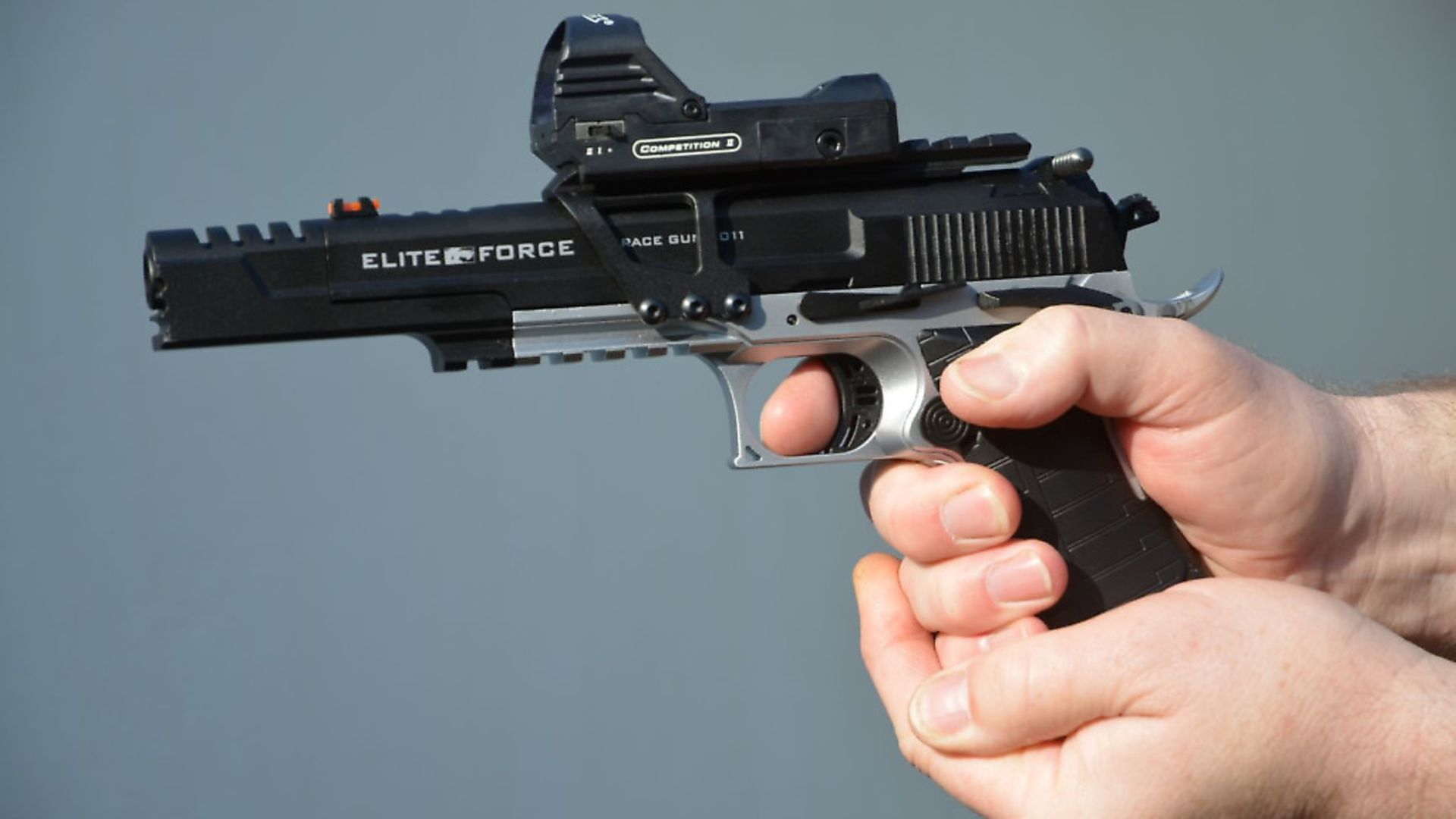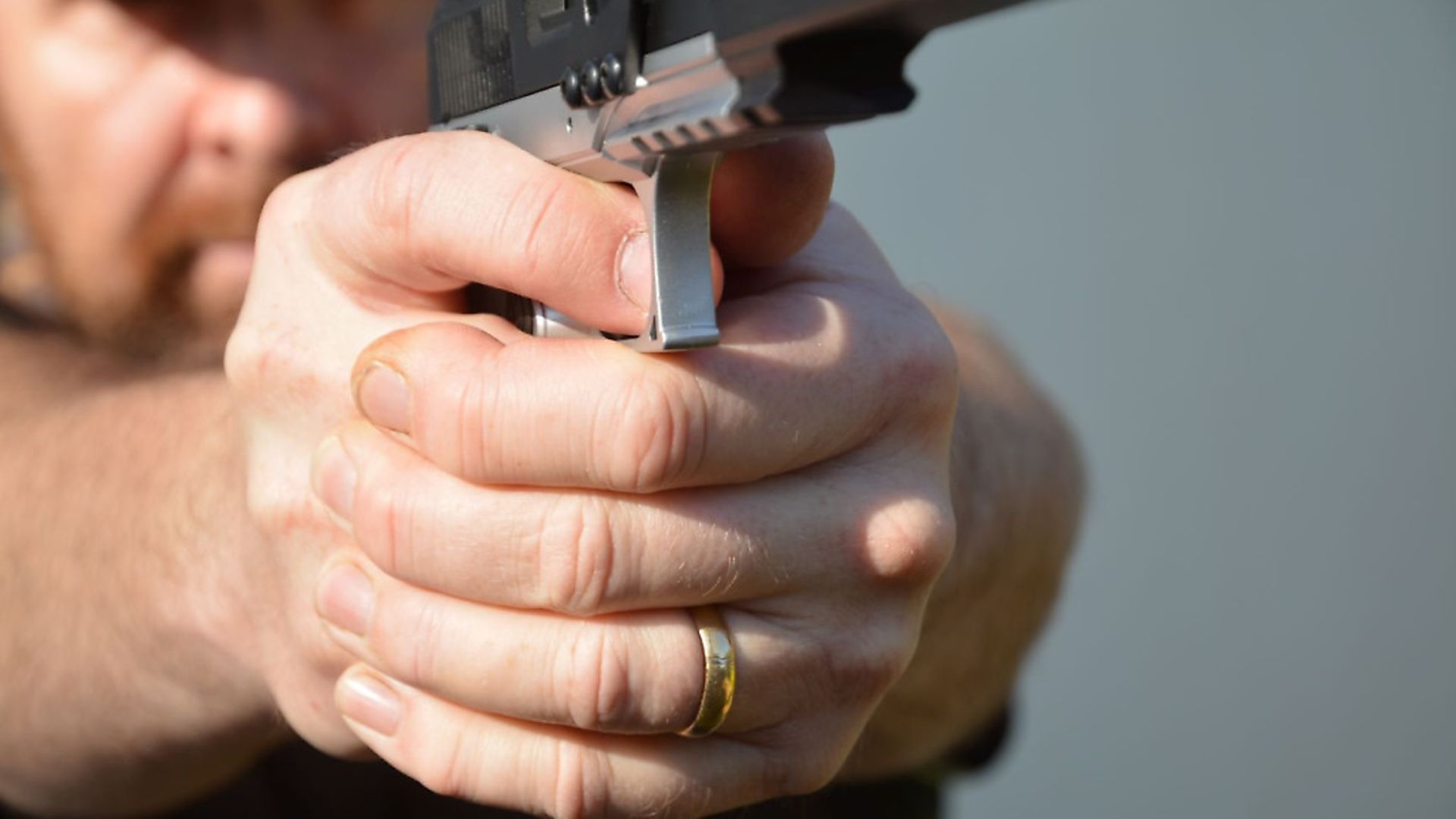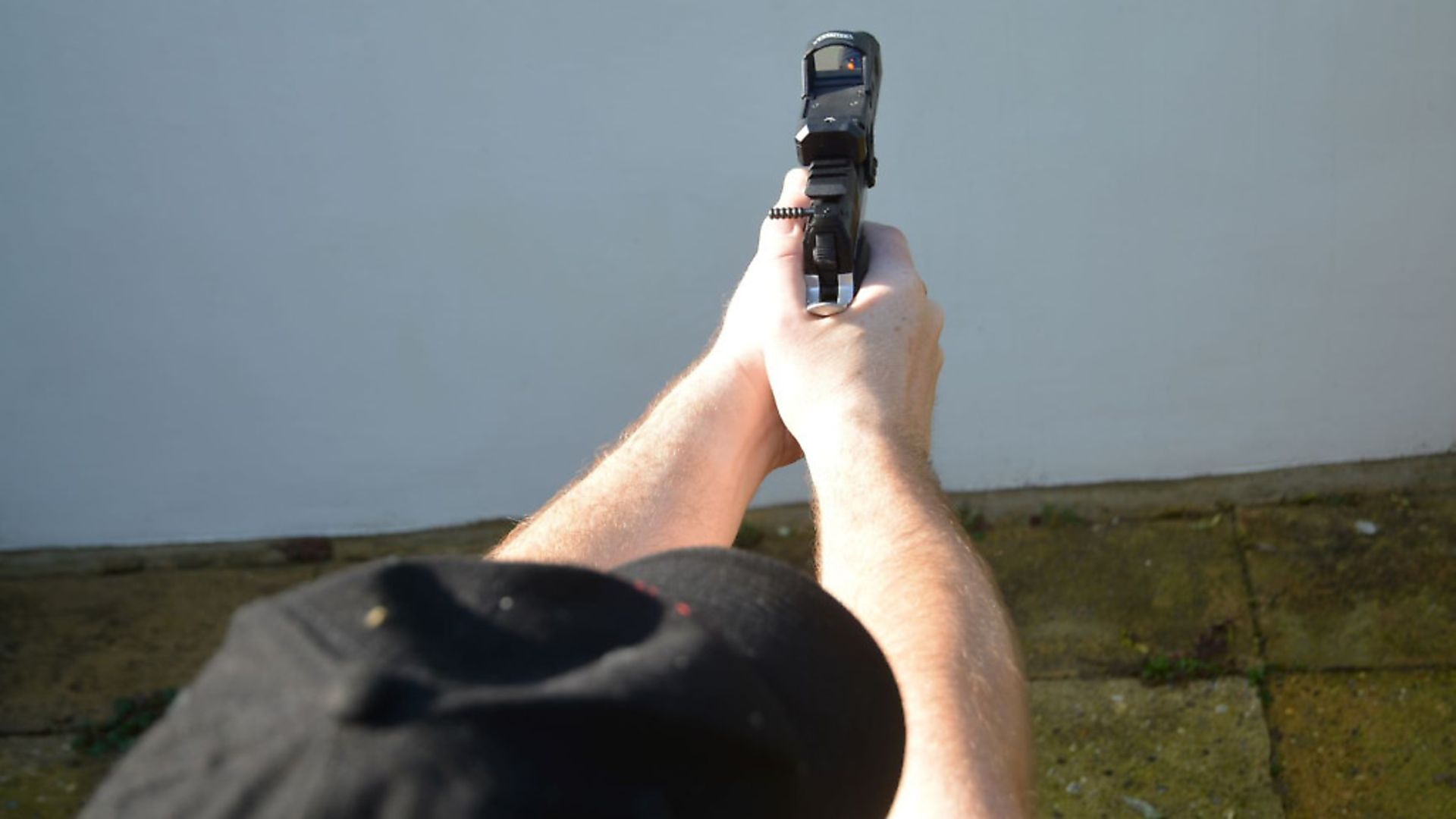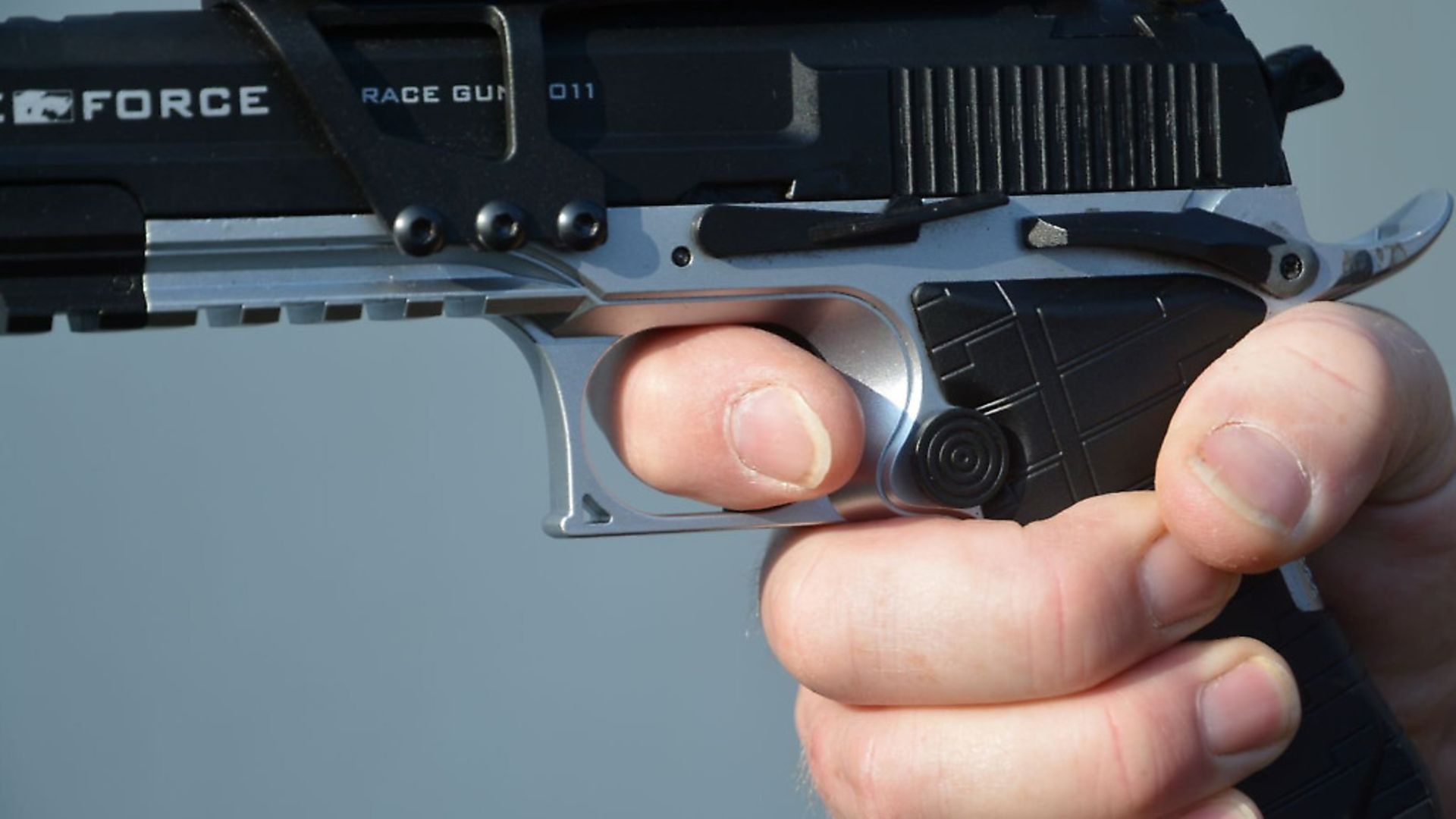Phill Price takes us through his tips for better pistol shooting
 credit: Archant
credit: Archant
Time and again, our reader surveys and letters tell us of your love of pistols and at the recent British Shooting Show several readers commented to the editor that they’d love to see more about them – in particular, how to shoot them well. It’s obvious that shooting a handgun is always going to be more difficult than shooting a rifle, for a number of reasons, but perhaps that’s part of what makes them so appealing to Airgun World readers. Is it the challenge you love? I bet it is, plus the satisfaction that comes with getting it right, of course.
Clearly, holding a relatively lightweight gun at arms’ length is always going to be much more difficult than pulling a rifle into your shoulder. Humans are ‘wobbly bags of flesh’ at the best of times, and no matter what you think, we all shake and sway all the time – even the Olympic medal-winning heroes. However, there are many techniques we can employ to steady things down. I’ll discuss the two-handed hold, simply because that’s what the vast majority of our readers use, most of the time. It has the obvious advantage of the added support and stability that the second hand offers the first.
In my explanation, I’ll use the term ‘strong hand’ to mean the one holding the pistol and ‘weak hand’ as the one adding support. In this way the instruction will be equally useful to right- and left-handed shooters. This is an Americanism that I picked up in my full-bore shooting days and I think that it’s a clear description. It comes from the fact that a right-handed shooter will shoot best with his right hand and worst with his left in single-handed shooting and has nothing to do with physical power.
 credit: Archant
credit: Archant
Choice of gun
Before we can even think about technique, we need to consider our choice of gun and what we hope to achieve with it. If you’re a small or lightly built person, selecting a huge, spring/piston job that weighs a ton is not going to help you to shoot accurately. However, if blasting steel baked bean cans upside down from six yards is your bag, then go ahead and buy one, with one caveat. Accuracy matters more than anything else in my experience and missing is no fun at all, so all the power might seem exciting to begin, but if you can’t hit the target it’s going to lose its shine pretty quickly. My advice is to select a pistol that you can comfortably hold on aim and forget about power.
Next, think about how the grip fits your hand. If you find it awkward and uncomfortable to begin, it will only become more so as a long plinking session draws on. Hold as many different models as you can, perhaps by trying those of your clubmates at the range, or visiting a well-stocked local gun shop, to see which feels best in your hand. Just because one particular gun suits your pal, it doesn’t mean it will suit you, so choose for yourself.
I’m not going to discuss top-class target guns because I believe that they’re of little interest to the average shooter. What the majority of us like is plinking guns, either powered by CO2, or air in the form of spring/piston power plants or pump-ups and each has its merits and drawbacks.
 credit: Archant
credit: Archant
Muscle memory
In terms of how you shoot them, they can be divided into two categories, recoiling and recoilless, and that matters a lot. Recoilless guns are always easier to shoot accurately, so refer to my earlier point. Pump-up and CO2 guns are most fun in my experience.
Shooting a pistol accurately begins with gripping it properly. Ensure that the web between your finger and thumb is as high on the grip as you can make it and that the barrel is in line with the forearm of your strong hand. The pad of your trigger finger should rest comfortably on the trigger blade. Don’t reach too far through the trigger guard so that the crease below the pad is in contact with the blade. Likewise, don’t try to pull the trigger with the tip of the finger.
As you raise the pistol to aim, the sights should align naturally between your eye and the target. Practise this movement with an unloaded pistol in a safe environment until you can make it happen naturally. When you have it working perfectly, you will be able to raise the pistol with your eyes shut and when you open them, the sights will be in the right place. Repetition is the key to building the muscle memory you’ll need if you plan to shoot well, so put aside a few minutes of every day for some practice.
 credit: Archant
credit: Archant
Relaxed
I mentioned that the support of your weak hand is a great help to stability on aim, but only if you use it properly. Please don’t copy all the daft holds you’ve seen in movies, such as when the weak hand cups the bottom of the pistol’s grip or holds the wrist of the strong hand. The fingers of the weak hand wrap around and interlock the fingers of the strong hand and in this position you’ll be stunned by the gain in stability. The photos explain better than words. The index finger of the weak hand should be hard up against the trigger guard, and the pad should end up between the knuckles of the index and middle finger of the strong hand. Each subsequent finger will naturally find its place. The thumbs should point toward the target with the strong hand thumb resting firmly on the one of the weak hand. In this way, you maximise the contact of the two hands, eliminating as much wobble as possible.
The weak hand applies a little grip pressure, whilst the strong hand is held in the most relaxed way possible, which sounds strange, but once you’ve tried it you’ll understand in a split-second. The massive advantage here is that your strong hand is relaxed, and therefore in the best possible condition to pull the trigger.
 credit: Archant
credit: Archant
Ultimate control
With the two hands cleverly locked together, your arms form one of the most stable shapes which is a triangle. Using this to our advantage is simple, yet yields huge benefits. Shooters of heavy recoiling, centre-fire handguns modify this shape to help them manage the recoil, but we have no need to worry about that problem.
Pulling, or pressing the trigger as we really should, is a difficult thing to do with any gun and all the more difficult to do with a handgun. As the muscles contract to move your trigger finger, they also move the rest of your hand, which affect the sights, taking you off target at the worst possible moment. With practice you’ll find that you can support with the weak hand and relax the strong one for the ultimate control of the shot’s release. Please take the time to absorb and digest this technique because it will improve your accuracy like no other practice.
 credit: Archant
credit: Archant
Going further
To enhance your trigger control further, visualise pulling it back directly in line with the barrel. If you pull to one side or the other, you again drag the sights away from your aim point at the moment the sears release, and you’ll be wasting your accuracy potential.
Please take the time to learn and practise these techniques and I’m sure you’ll find that your accuracy and consistency will improve. Not every part will come to you immediately, but in time they will - and you’ll be glad you persevered.
__________________________________________________
Read more...
Holding tips to improve shooting technique
Essential art of trigger release
A closer look at the iconic Glock 17